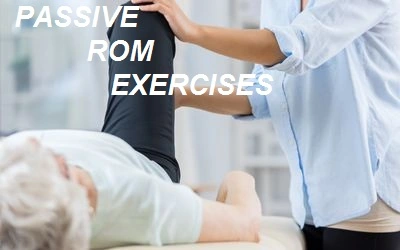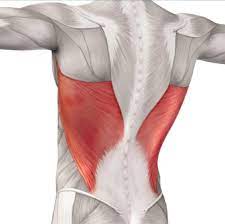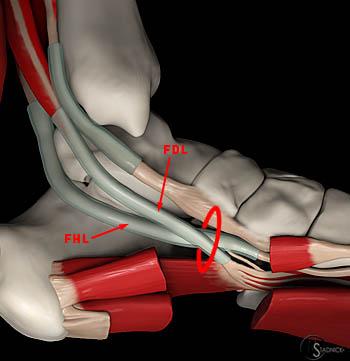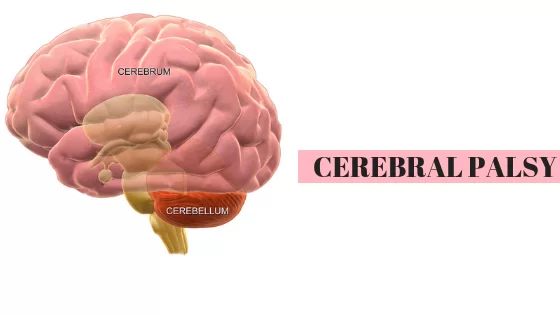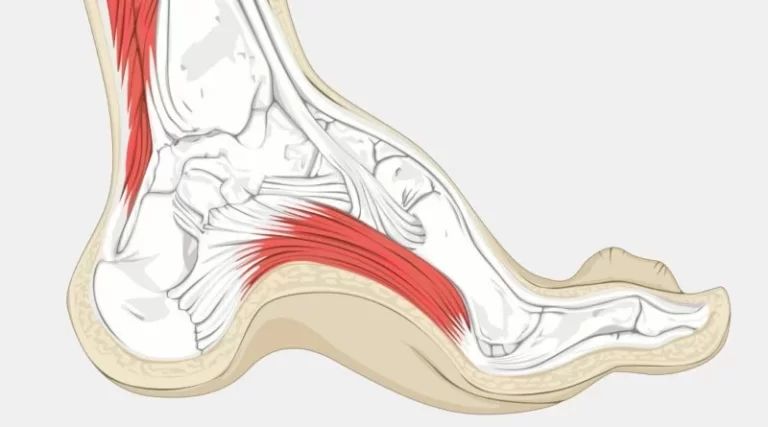Bridging exercise
Table of Contents
What is Bridging exercise?
- If you find you’re spending a lot of time sitting at the moment, the bridge exercise can help to keep your lower body active.
- A bridging exercise is a closed-chain exercise for the lower limb.
- It also advises doing this when the patient is having back pain.
- It helps to improve motor control of the lumbopelvic region.
- This is called a gluteal bridge.
- This exercise is a weight-bearing exercise.
- It’s can be used as a warm-up exercise and is even an excellent rehab exercise for improving core and spinal stabilization
Which muscles do bridging exercises:
- Core muscles -rectus abdominus, erector spinae
- Biceps femoris
- Semitendinosus
- Gracilis
- Gluteus maximus
- Gluteus medius
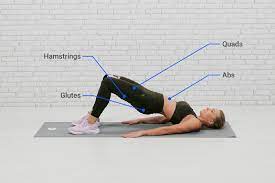
Health benefits of bridging exercise:
The followings are the health benefits of bridging exercise:
- To help in relieving low back pain
- Improve proprioception in the lumbar spine
- It activates back muscle contraction
- To improve Spinal flexibility
- Reduce knee pain and back pain
- To improve the strength of your core muscle and your abdominal muscle
- Improve balance
- Improve posture
- Helps to relieve stress
- Improve your performance in running
- Boost your mood, reduce anxiety and fatigue
- Help to relieve menopause symptoms
- Help to Relieve menstrual discomfort
- Help to arouse abdominal organs, lungs, and thyroid
How can you do basic briding exercises?
- Start by laying flat on your back on the floor
- Making sure that there is no gap between your back and the floor, press your core into the floor, feeling the hips get in line with the spine (no arching)
- From here, begin to draw the feet towards the booty, until you reach a 90-degree angle
- Pressing your feet firmly into the floor, with your arms flat by your side, and your chin tucked so that your spine is straight, Breath out and lift your bottom back up from the floor.
- Hold this uplifted position for 10 to 15 seconds.
- Now lower the back to the floor and repeat this 5 to 10 times in one session.
- You also do this exercise three to four times a day.
- For making it more challenging you can add a weight, a band, or another piece of equipment.

Different variations of bridging exercise:
Bridging exercise with Elevated Feet:
- For this exercise, you need one bench.
- You have to be supine lying on a mat and put your heels on top of the bench and you can place a small pillow under your head if you want to be more comfortable.
- Now you have to move your back and buttocks upward from the floor.
- When you are in the top position, your body should be in a straight line from the knees to the shoulders
- You have to maintain this position for 5 to 10 seconds. now slowly put your body down. and repeat this exercise 8 to 10 times.
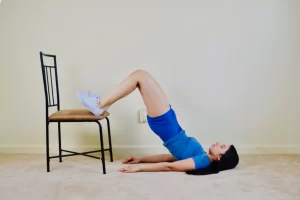
Single-Leg Bridge:
- This variation of bridge exercise does not require any equipment.
- This exercise helps to strengthen the hip extensor muscle.
- For this exercise, you have to take a supine lying position with your hands placed by your sides. knees bent, and feet flat on the floor just below your knee.
- Now you have to lift your one leg in an upward direction around 45 degrees from the floor.
- This is the starting position for a single-leg bridge and then you have to lift your back and hip from the floor and use your abdominals and gluteal muscle to support the lift, during this make sure your shoulder and knees are in a straight line.
- Maintain this position for some seconds.
- Lower the back and hips to the floor slowly and with control, keeping the leg extended, to return to the starting position.
- Repeat this for another leg to avoid muscle imbalance do this 8 to 10 times in one session and three to five times a day.
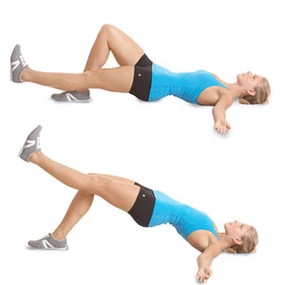
Gluteal Bridge With Marching:
- For this exercise, you have to lie on met with both knee bends and your feet flat on the floor.
- This is the starting position.
- Now you have to move your back and buttocks upward by contracting your core muscle.
- For the gluteal bridge march, you have to pull your knee towards your chest.
- Return the feet to the floor and lift the other knee repeat this for both knees.
- Continue it 8 to 10 times for two sets.
- This movement helps to strengthen your core muscle and helps you in everyday activities as well as increase your performance in sports.
- It maintains good posture, improves balance, and reduces back pain.
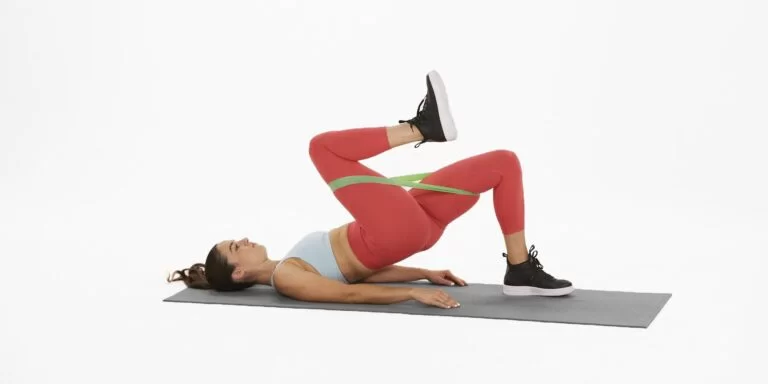
Precaution:
- Avoid lifting your hips too high, as hyperextending your lower back can lead to strain.
When you do not perform bridging exercise:
- Final stages of pregnancy
- Immediate after delivery
- Healing from any surgery
- Any injury of your back, abdomen, pelvis, hip joints, knees, or ankles.
- Abdominal hernia
- Abdominal discomfort
- Any tingling sensation over the leg and thigh
FAQ:
To prevent lower back injury and support movement, keep your core engaged throughout the exercise.
A bridge exercise strengthens your gluteus (butt) muscles — the gluteus maximus, medius, and minimus — and hamstrings, which are the main muscles that create the posterior chain.
Doing bridge exercise every day will help to “wake up” the glutes and reset the pelvis. This helps the body to recall to use the hips to create movement instead of the more fragile lumbar spine.
How often should you do bridges?
Ideally one should do two sets of ten bridges, two to three times a week.
The Bridge exercise is an excellent way to strengthen the muscles in the lower back, making everyday tasks like getting out of bed a little easier.

